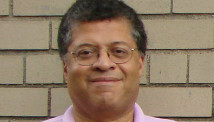Singer/songwriter Benny Blanco has produced some major hits by stars like Maroon 5, Rihanna and Ke$sha.
STORY HIGHLIGHTS
- A hit song could be a catchy earworm or a heartfelt ballad
- Top producer Benny Blanco says every song needs a hook
- Billboard expert says while albums aren't selling big, music is everywhere
(CNN) -- Don't ask music super-producer Benny Blanco to whip up a No. 1 song for an artist because it ain't gonna happen.
Sure, the man knows how to make hits: His work on Rihanna's "Diamonds" and Ke$ha's "Die Young" landed both at the top of the Billboard charts. But he's the first to tell you that trying to compose a chart topper is almost always guaranteed to fail.
"When you're like, 'Yo, we gotta write a hit song, we need a hit song right now," that never works," Blanco told CNN. "Every time that happens, I never write a hit song. I write a s****y song that sounds like someone trying to make a hit song."
Blanco knows of what he speaks. Two of the songs he helped produce are up for Grammys this year: Maroon 5's "Payphone," nominated for best pop duo or group performance, and Trey Songz's "Heart Attack," which is competing for best R&B song.
Blanco said in an era where singles rule (seriously, when was the last time you bought an entire album?) the pressure is on labels, artists and producers more than ever to produce a song that will head straight to the top of the charts.
But what does that song look and sound like? Is it an earworm such as Carly Rae Jepsen's "Call Me Maybe"? An intensely personal tale such as Adele's "Set Fire to the Rain" or a breezy "I can relate to that" poppy tune such as Taylor Swift's "We Are Never Ever Getting Back Together."
The answer is yes.
"Everything needs to be a hook," said Blanco, who snagged the Songwriter of the Year Award at the BMI Pop Awards in 2012 along with Ester Dean and Pitbull.
"Everything needs to be catchy because a listener is either going to stay with the song or lose interest in the first five seconds. But people also like those songs they can relate to and say, 'Yeah, I went through that.' "
Chris Mooney, senior director of artist promotions at TuneCore, said artists looking for a No. 1 song have to prepare their fans for a release by using every social media tool available: YouTube videos, tweets, Facebook postings, etc.
TuneCore distributes music for artists through partners such as iTunes and Spotify for a nominal fee. The company does not, he said, take a percentage of the revenue of the music distributed, and that business model has attracted such well-known acts as Nine Inch Nails, Ziggy Marley and the Civil Wars to use the service.
But if an artist wants to have a true No. 1 smash across the country, he or she will have to resort to some old-fashioned methods, Mooney said.
"You really need radio play, and that's not something everyone can do," he said. "But I still think that's key to having a No. 1 song."
That type of marketing to get airplay can be a pricey proposition. Just ask Sarah Stennett, an A&R executive and manager who works with singers Ellie Goulding and Jessie J. There are plenty of songs that are good tunes, Stennett said, but "when you've got a record that works, you need a record label that will then work that record."
But for a label to justify the expense of promoting an artist, the singer and song have to gel in a way that will connect with the audience, she said.
"There are certain songs that just encapsulate all you need to know about an artist," Stennett said. "They are like personality records. For instance, 'Get the Party Started' by Pink. It was a hit, but it also told you a great deal about who Pink was as an artist."
Stennett said the machine involved in promotion has to remain enthusiastic about the project.
"Everyone has to be about the message," she said. "It's about spreading the message. Have you heard this song by ...?"
Silvio Pietroluongo, director of charts for Billboard, said the conundrum the music industry faces is that while albums aren't selling nearly as well as before, the music is bigger than ever.
"I think music is more popular and accessible today than it's ever been," he said. "It's a major component of advertising campaigns, sporting events and anything multimedia."
That means the industry now has varying degrees of success, he said, from an artist such as Adele, whom he calls "lightning in the bottle" able to sell both singles and albums, to some such as Jepsen, who has sold millions of singles but not as many albums.
Pietroluongo said any artist is one hit away from that big break or even a comeback. But today's hit can easily come from performers such as Flo Rida, who, Pietroluongo said, is one of the all-time, top-selling digital download artists despite a lack of recognition as a hitmaker.
"They are catchy tracks," Pietroluongo said of the rapper's music. "I think the challenge with Flo Rida has been to put a face with the hits. I'm not sure if you locked 10 people in a room that half of them would realize that all the songs they love are Flo Rida."
Producer Blanco is also not easily recognizable, though he may increasingly be responsible for some of the most played music out these days. The process of putting it all together is as much fun as work, he said.
It often starts with a roomful of friends and lots of food. He likes to write with friends, he said, since as soon as he writes anything he usually shares it with them anyway. And a hit could occur while he's chilling in a hot tub or taking a walk: anything as long as the ideas keep flowing.
"I let the song come to me," he said. "Then that thing comes to you, and you just know what that thing is. Music isn't like a 9-to-5 job. You never know. It's just the most unpredictable thing."













